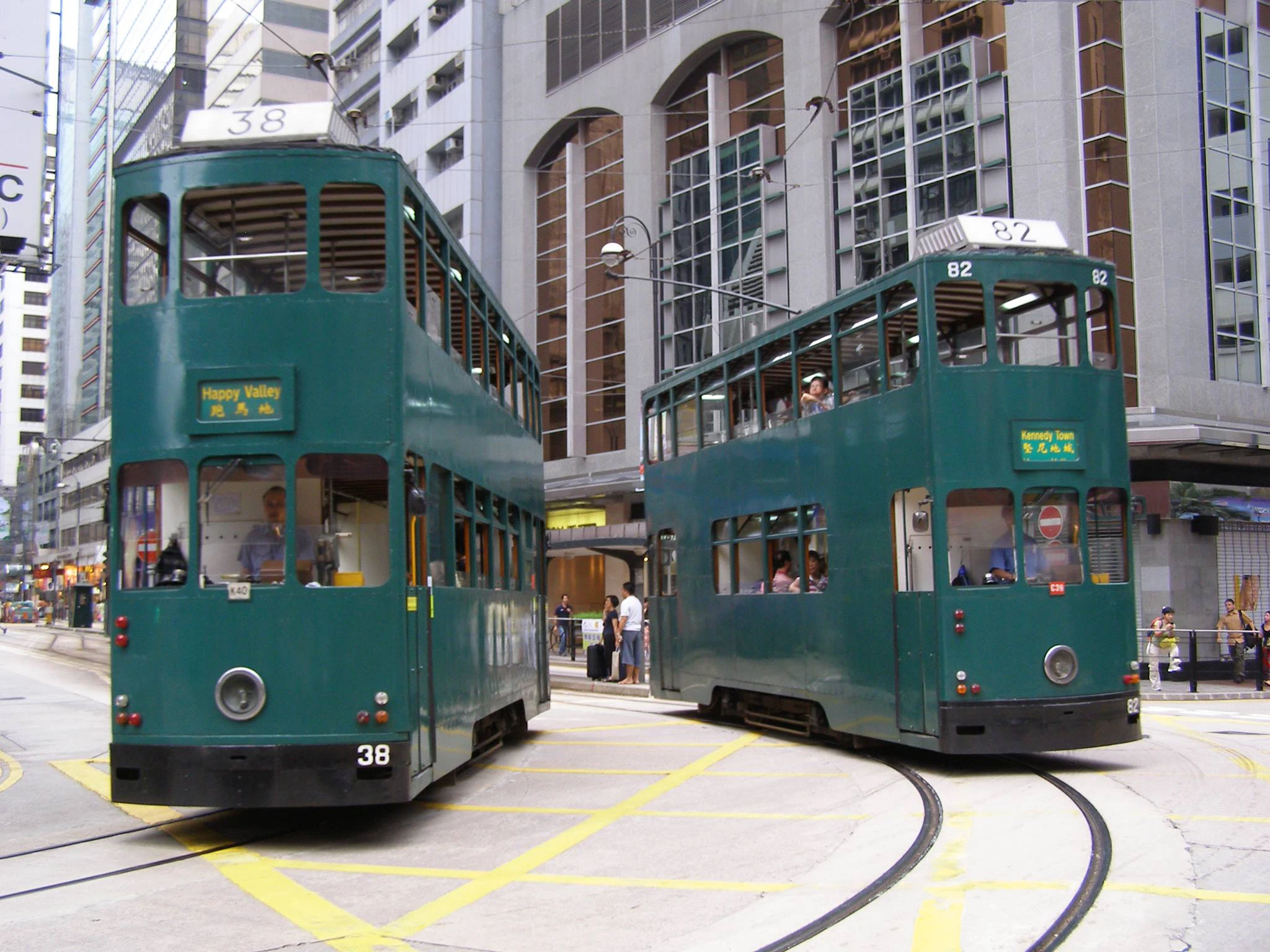Ding Ding. Not only as the iconic sound of Hong Kong’s trams that chimes as they arrive at stations, but also one of the cutest names that locals could possibly call a transport. Commencing its service in 1904, Hong Kong’s trams have witnessed the transformation of Hong Kong Island over a century.
The system was built by the Hongkong Tramway Electric Limited (now Hong Kong Tramways Company Limited) in 1901. A single-track system was constructed from Kennedy Town to Causeway Bay, then extended to Shau Kei Wan two years later.

The first fleet of tramcars were built in the United Kingdom then shipped for assembly in Hong Kong. The 26 tramcars were all single-deck, 10 served as first-class tramcars and the rest as third-class. For ease of operation, the initial plan of three-class-distinction was abandoned.
First-class tramcar carried 32 passengers in a compartment with two long benches on both sides and open ends. Third-class tramcar was a 48-passenger compartment, open-sided with six sets of benches running crossways, back to back. The difference in comfort of tramcars leads to differences in tram fares. Tram fares for the first and the third class were 10 cents and 5 cents respectively.
The idea of fixed path vehicles was fresh to citizens back when the service commenced in the 1900s. Some did not realise to give way to oncoming trams while standing in the way or some curious onlookers wished to board the tram without paying the fee. Some coolies, moreover, discovered the tram tracks could help them haul their heavy carts. Such abuse thus caused a fine of HKD 20 to deter the illegal use of tramways.
The tramways company later introduced double-deck trams in 1912, i.e. the 2nd generation trams thanks to strong passenger demands. The open-top upper deck was, however, not functional on rainy days, hence the introduction of the 3rd generation trams with light canvas roof covers.
Tram service was further extended to the Race Course in Happy Valley in 1922, then a route from North Point to Whitty Street in 1953. The company also substituted the single-track system with a double-track system, forming a prototype of the complete circuit of Hong Kong tramways now.
Back during WWII, trams were used for cargo purposes. As tanks and military vehicles were painted in green, the green paint was excessively produced and remained unused after the war ended. Green paint was therefore cheap compared to other colours of paints, and so became the main colour of trams since then.
The 1970s was a decade of transformation. With modifications of tramcars in the last decade, company policies were overhauled too. The panels on tram bodies were rented out for advertising, giving a new colourful, vibrant coat to the trams in 1970. Then female conductors and drivers were employed from 1971 and class distinction of seats was abolished in the year after, diminishing the socio-economic distinction between gender, class and race.

Though everything changed, one thing that the company remains is the tram fee. It remains low that a ride only costs HKD 2.60/ adult, HKD 1.30/ child and HKD 1.20/ senior citizen as in 2021. You may hop on and off at any stops just by paying the fare when you hop off and it charges much cheaper than any other public transport available.
Told to be the “slowest” transport in the fast-paced city, trams are in fact, the best transport to experience the north of Hong Kong Island. The tranquility that trams provide brings you an opportunity to experience the city in the solitary compartment, peacefully observing things happening around you.
The company offers a tramoramic tour, a guided sightseeing tour on a 1920-style open top tram. The tram travels from the West Market Terminus to the Causeway Bay Terminus, amidst the bustling streets, historic buildings and modern skyscrapers. While the tour guide and plug-in audio guides tell the authentic tales of Hong Kong on the tram, the on-board mini-museum displays old photos, hand-written letters, figures and plaques showcasing the history of Hong Kong’s trams.
The tour charges at HKD 150/ adult, HKD 95/ child and free of charge for children below the age of 4, with a two-day pass of unlimited access to the tram network. With the two-day pass, you may also check out other attractions along the rail.

Witnessing the transformation of a British colony to Asia’s international city on the tracks, Hong Kong trams have not only carried a lot of passengers, but memories that generations of locals share. Hop onto one of these trams now to embark the journey of your own.
#hktramways #hongkongisland #hongkongtram #hongkongtravel #ilovehongkong #publictransportation #tranquility #transportation #trams #discoverhongkong #explorehongkong #westernmarket #causewaybay #visithongkong #tramoramictour


